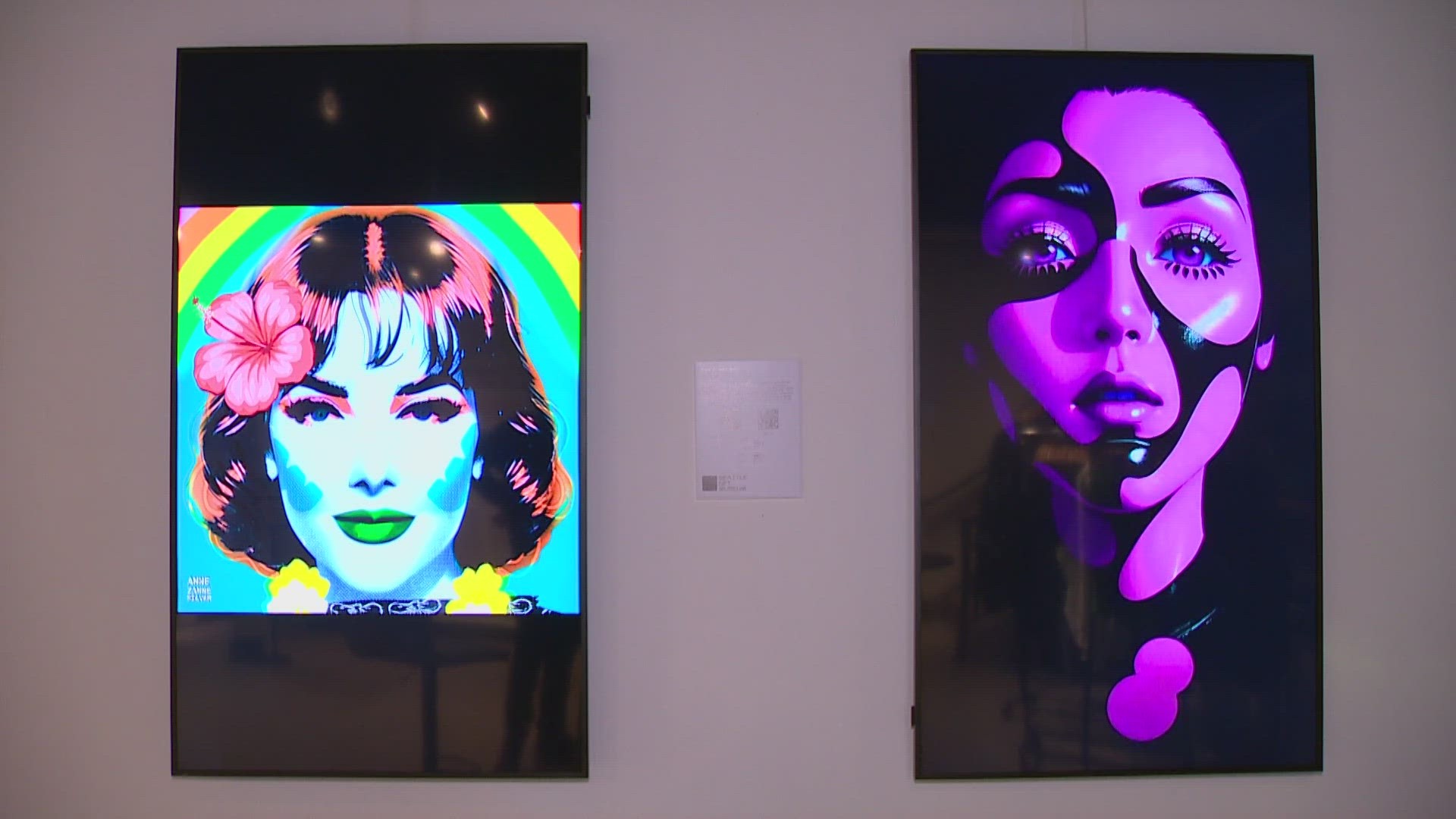SEATTLE — Seattle artist Gerardo Pena uses his steady hand to add color to a large mural he’s painting for a local workers' union. He looks towards the face of a woman he sketched.
“I knew she was passionate about something and obviously she has a face mask on, so I knew the focus had to be in her eyes,” Pena, known as Periko the Artist, said.
Every face tells a story for Pena.
"The beautiful part of art that comes from a human being is that it takes a long time to own in your skills and your voice," Pena said.
His canvases and murals are moving, much like the digital art on display at Seattle’s NFT Museum.
One piece is a different perspective on a Diego Rivera-style painting. It was created with the help of artificial intelligence.
"We've done entire shows at the museum that were all artists working with AI," co-founder of the NFT Museum Peter Hamilton said.
The museum is a collection of non-fungible tokens. It is the first NFT museum in the world. Hamilton has noticed more and more digital artists are utilizing AI in their work.
"It’s really fascinating to think about this as a connection or assistant to the art-making process,” Hamilton said. "It really is another tool in their tool kit."
University of Washington Ph.D. student Adam Hyland researches the controversies surrounding AI-generated art.
"The speed of it and the scale of it is what's worrying," Hyland said. "Making predictions about what the art world is going to look like in five years is really challenging, unless the prediction is there's going to be a lot of disruption."
Renton-based Wizards of the Coast, the publishers of the popular tabletop game Dungeons and Dragons, were recently accused by fans of using AI to create a backdrop for a promotional image of new cards in "Magic: The Gathering."
“We can’t promise to be perfect in such a fast-evolving space, especially with generative AI becoming standard in tools such as Photoshop, but our aim is to always come down on the side of human-made art and artists,” the company told its fans.
"Immediately one of the ethical problems is that companies will see artists essentially as cost centers to be replaced by someone who can use an AI art tool which has a much more predictable, they feel, cost structure for them," Hyland said.
A talented painter like Gerardo Pena, who doesn’t use this new tool, may stand out even more with the proliferation of AI.
However, Hyland said some digital artists are already being phased out.
“Fast forward ahead five to 10 years and you don't have these people building those skills,” Hyland said. “Or the people who build those skills are able to do it for free, which means they were probably rich to start with. It really changes the demographics of digital art."
Back at the NFT Museum, Hamilton sees AI as part of the evolution of art, which is inherently subjective.
"Any piece of art that is created was created because that human saw a lot of other pieces of art,” Hamilton said. "Everything comes from something else, and AI is an extension of that."
A recent painting by Pena explored this relationship. It is AI holding a baby.
"In my painting they're both the same age, but AI is already an evolved being,” Pena explained.
Pena said his biggest concern, along with many of his colleagues, is how artists will be properly compensated when their work is essentially recreated by AI. That will be a debate for a long time to come.
“I’m trying to keep up, but at the same time maintain the same old school style art that I'll always be making," Pena said. "Our story can't be replaced by AI. I think AI will have its own story."
Whether you see it as a tool or a tragedy, it is here.

